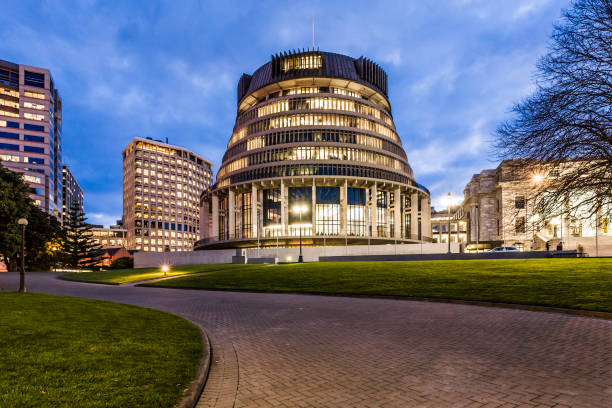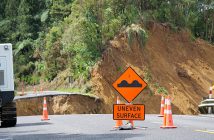Infrastructure New Zealand has released the second tranche of its policy positions in the lead-up to the 2023 election to act as a starting point for discussions on how to improve the current state of play in the infrastructure sector

At present, Aotearoa New Zealand faces a number of challenges to meet current and future infrastructure needs. The challenge we put forward is the need to change our political, planning and funding systems to deliver better long-term, sustainable outcomes for New Zealanders. But we must not lose sight of what we have. We can do better at utilising private capital and leveraging partnerships between Māori, central and local government, and the private sector to address a range of ongoing challenges, including our existing infrastructure deficit.
Tranche one advocated for the improved use of private capital for New Zealand’s infrastructure, better use of current alternative funding and financing tools and improvements to local government settings. This next wave looks at the simplification of capital funds, transport pricing and the improved stewardship of the infrastructure system.
Simplifying capital funds
In our ‘Simplifying Capital Funds’ paper, we outline that over the last decade, central government has invested more than $32 billion in the direct provision of infrastructure through 17 different infrastructure-related capital funds. While this investment has resulted in many successful infrastructure projects, each fund established has had its own: administration bodies who are responsible for the funds; application process (including forms, information requirements, assessment processes); repayment terms (such as grants versus loans); and reporting requirements. Agencies, sometimes with limited initial capability, have had to establish and disestablish teams/units and systems to administer these funds. Cross government sharing of expertise and resources has not been effectively harnessed.
More fundamentally, these different funds are cutting across the same areas of investment but with different priorities and criteria. There has been no strategic approach from central government towards this investment, rather it has been ad-hoc and led by different whims of the day. As a result, recipients (often local government) are left navigating the myriad of potential funding options, spending large amounts of money on various applications. Aligned with Te Waihanga’s recommendation in the New Zealand Infrastructure Strategy, INZ recommends that a consolidation occurs, and a set of clear infrastructure capital funds is established.
This would enable the Government to prioritise investments based on agreed priorities, with a focus on national significance and net benefits and enable greater public transparency of infrastructure capital funding decisions. Drawing on overseas experience, we recommend that the infrastructure funds cover areas such as transport, housing, and urban development, and should be administered by one agency. These funds should have standardised application forms and assessment criteria.
Transport Pricing
In our ‘Transport Pricing’ paper, we highlight that INZ has long advocated for transport pricing and congestion charging to be implemented across our cities, particularly Auckland. Transport pricing, over other funding mechanisms, strengthens the relationship between those who pay for infrastructure and those who benefit from it. At present, motorists pay for the use of roads through a range of methods, such as petrol taxes, road user charges, vehicle registration fees and council rates. However, these charges do not consider the time or location of travel — for example, driving on a congested motorway in rush hour versus driving along a quiet road late at night. The true cost of these two journeys is very different — driving at peak times adds to the congestion on the road, which affects, or has a ‘cost’ to, other road users. These costs also impact:
• the economy — for example, by adding to freight travel times and costs, and
• individuals — for example, people have less time at home with family.
In short, we are not paying the true cost of transport.
While there is increasing agreement that we cannot build our way out of congestion, tangible options to progress implementation of congestion charging tools, especially in Auckland, have languished.
Over the last 10 years, we have seen many attempts to introduce transporting pricing in our cities. Most recently, in 2021 the Transport and Infrastructure Select Committee investigated congestion pricing and made several recommendations to Parliament. The Committee recommended that the government:
• progress legislation to enable New Zealand cities to use congestion pricing as a tool in transport planning, and
• implement a congestion pricing scheme in Auckland.
However, there has been no decision from the Government since.
It is important to note that congestion is not only the result of inadequate roading provision, but also the product of inadequate alternatives. Fast, affordable, and convenient alternative mode options reduce the willingness of travellers to sit in congestion.
That is why any implementation of congestion charging needs to ensure that people:
• continue to have the choice to drive if they want to
• continue to have the choice to drive without being unreasonably financially impacted if they live further away from where they work and cannot easily switch to another mode and are from lower-income households, and
• be able to easily switch to other transport modes (supported by adequate infrastructure) that offer an efficient and rapid/frequent service.
We also need to plan better – as well as congestion charging, planning for growth through intensification especially around rapid transit corridors allows more efficient use of land. It will deliver benefits in the form of more affordable housing and in the form of lower congestion and infrastructure charges for wider residents.
We encourage the Government to progress legislation to enable New Zealand cities to use congestion pricing as a tool in transport planning and recommend that the Government, with Auckland Council, should prioritize implementation of a congestion charging scheme in Auckland.
System Stewardship
At Building Nations in 2022, the then Minister for Infrastructure, Grant Robertson, announced that Ōtākaro Limited would be repurposed into a national Crown delivery agency – Rau Paenga, to project and contract manage large vertical infrastructure projects for a selection of government agencies.
In adding to the web of entities advising on and leading infrastructure delivery across the system, there is an opportunity to step back and reflect on the entities operating at the national level. In our ‘System Stewardship’ position paper, we identify that there is an opportunity to clearly identify and empower a system steward with a whole-of-system remit who can support and actively steer the disparate functions of entities and enable greater accountability and transparency across the system.
Our view is that Te Waihanga is well-positioned to perform a system steward role but needs to be empowered to do so. Thus far, the establishment of Te Waihanga has gone some way to creating greater oversight and a fuller evidence base in the system. Its strategy, infrastructure pipeline and review work, as well as the provision of its major projects advice and requirement for its procurement best practice to be adopted for projects with a value of $50 million or more, are examples of its impact in the sector. These functions also highlight the benefits of its whole-of-system vantage point.








